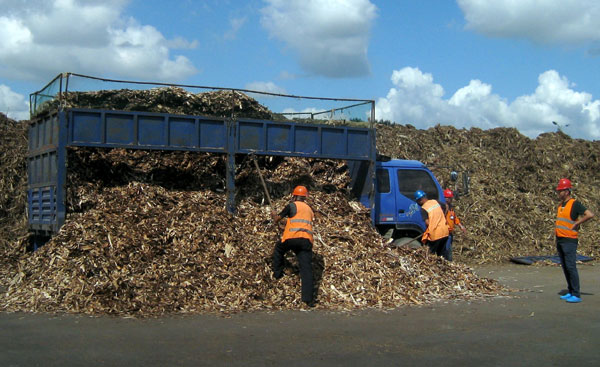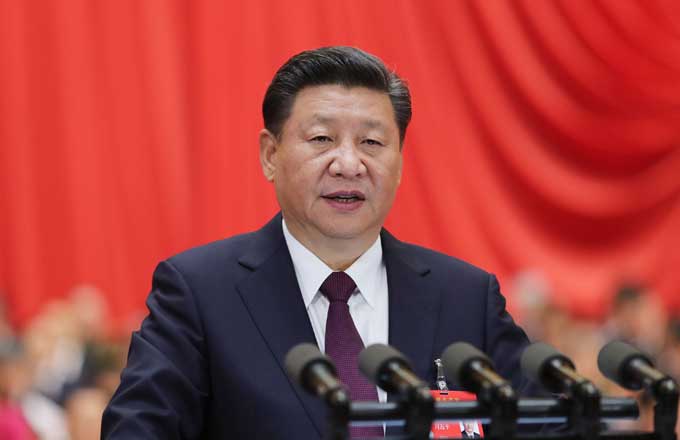Solution to growth of new-energy firms blowing in the wind
 |
|
Men unload bark at the National Gongzhuling Bio Energy Co in Jilin, which has developed a biomass project. [Photo by Jiang Xueqing / China Daily] |
Subsidy stalemate
The Ministry of Finance was also tardy with subsidy payments to National Gongzhuling Bio Energy Co Ltd, the project's main investor. National Gongzhuling did not receive the monthly subsidies for 2012 until January this year and is still awaiting the money for April to June. The situation has forced the company to rely on working capital loans to pay local farmers to collect straw, said Du Jiang, deputy general manager of the company.
Because of the oversupply of electricity in Jilin, the Gongzhuling biomass project cut power generation by 13 million kWh between January and July, causing a decline in revenues of 9.75 million yuan.
According to the Renewable Energy Law, power grid enterprises should buy all the grid-connected power generated through renewable energy within the range of their power grids. In practice, however, none of the provincial governments has enforced the law strictly enough, said Zheng from the Jilin provincial energy bureau.
"We don't need government subsidies or policies, but we do want effective enforcement of the renewable energy law," said Zhang of Datang Xiangyang Wind Power Generation Co.
"Given that the law has proved difficult to implement, the National Development and Reform Commission should launch a policy to specify the proportion of power generated with renewable energy - let's say 10 percent of China's total electricity consumption - as soon as possible. In this way, renewable energy will still have plenty of room for further development," said Zheng.
Contact the writer at jiangxueqing@chinadaily.com.cn
Wu Wencong and Zhao Xu also contributed to this story.
|
Seeking to reduce air pollution,Beijingmunicipal government has decided to cut coal consumption to 15 million metric tons by 2015, from 23.3 million tons in 2012, and to less than 10 million tons by 2017.[Full story] |
Beijing plans gas-fired future to solve problem China will reduce its consumption of coal and gradually increase the use of natural gas during the next few years, according to the Airborne Pollution Prevention and Control Action Plan (2013-17), which was released by the State Council on Thursday. Total energy consumption is measured in tons of coal, irrespective of the method of generation. In 2011, China's total energy consumption was 3.48 billion metric tons of coal, out of which coal consumption contributed 68.4 percent, while natural gas contributed just 5 percent, according to the National Bureau of Statistics.[Full story] |
|
China's total energy consumption, measured in tons of coal, was 3.62 billion metric tons in 2012, rising from 1.7 billion tons in 2003. Meanwhile, non-fossil energy accounted for 9.6 percent of total primary energy consumption and will grow to 15 percent by 2020, according to the National Energy Administration.[Full story] |
 |
- New-energy vehicle policy shifts gears
- New energy summit takes place in Chengdu
- Sino-French co-op in new energy
- New energy vehicles await fuel injection
- Low charge in new-energy initiative
- Is wind power running out of puff?
- China to focus on developing biomass, solar power
- SOEs dominate China's wind power projects
- China tops world in wind power, hydropower capacity
- Exhibition Special: The world's wind power industry gathers in Beijing





















